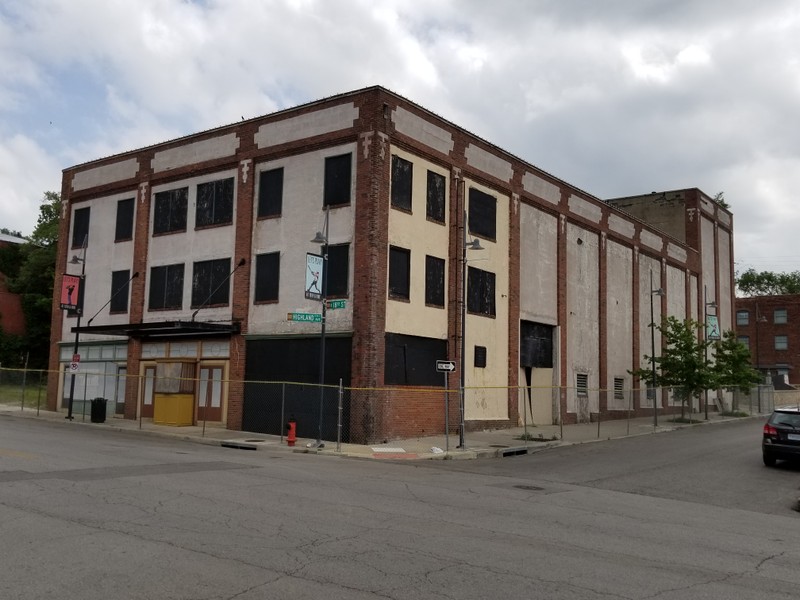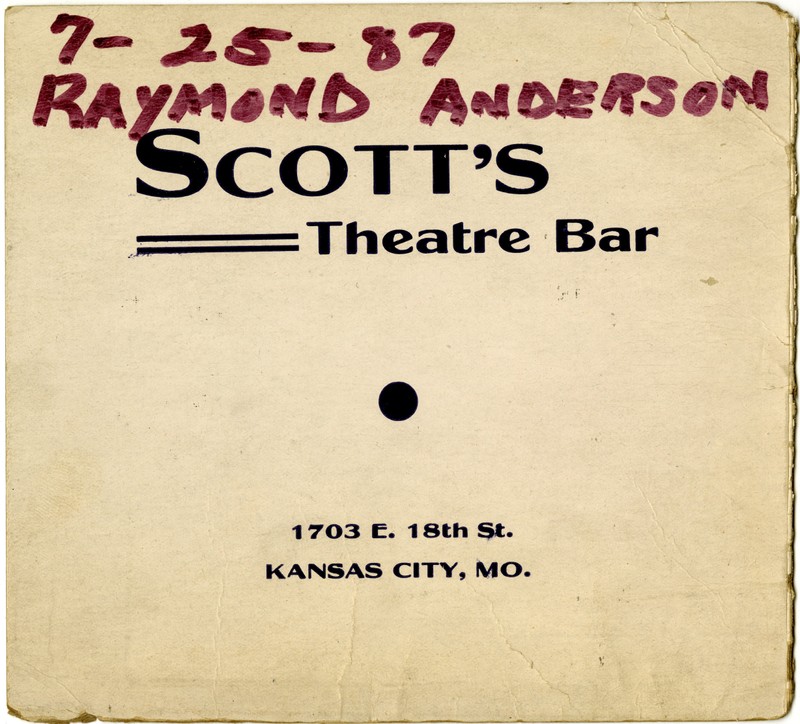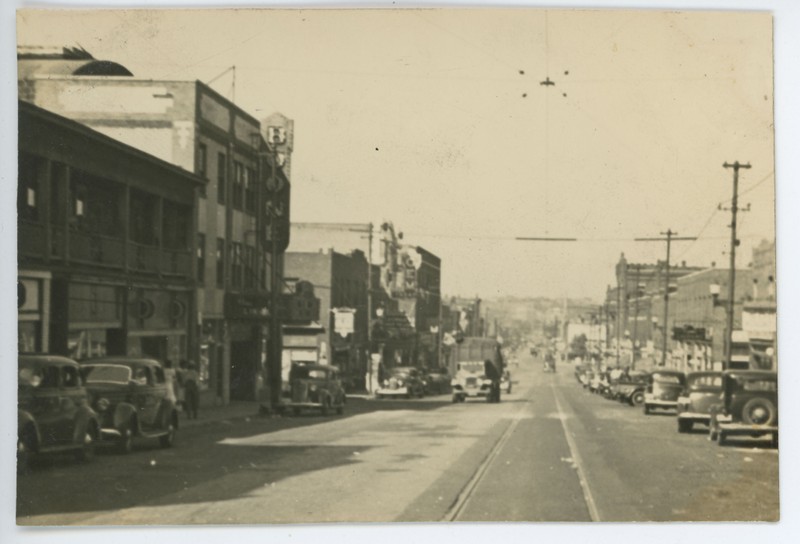Boone Theater | National Guard Armory
Introduction
Author-Uploaded Audio
Introduction to the theater's history by Michael Patton; recording created by Black Archives of Mid-America
Text-to-speech Audio
A theatre, bar, restaurant, turned armory and meeting place for military veterans, the now-dilapidated three-story building at 1701-1703 E 18th St. has been known many names within the past century. In 1924, the building was constructed under the name the “New Rialto”. The theater was renamed the “Boone Theater” in 1929 after the famous Black child piano progeny from Missouri, John W. “Blind” Boone. In 1949, the building was remodeled and opened as “Scott’s Theatre Bar”. Only a few years later, the restaurant closed and its day as an entertainment venue was over. In the mid-1960s, the building was used as a meeting place for local veterans. In 1979, the Mutual Musicians Foundation purchased the building for $1, but its condition has since slowly degraded. More recently, the building is a focal point of the 18th & Vine District Jazz Redevelopment plan and will soon be renovated as a vital part of 18th & Vine’s past, present, and future.
Images
Modern view of 1701-1703 E 18th St, looking southeast.

An advertisement for Scott's Theatre Bar

View looking west along 18th Street. The Boone Theater can be seen on the left.

Backstory and Context
Text-to-speech Audio
The New Rialto Theatre opened in 1924, joining the Gem, Eblon, and Lincoln Theatres in the vibrant entertainment district of 18th & Vine. The theatre was built on the existing site of the Highland Garden Theatre, an outdoor theatre for African-Americans during segregation. The New Rialto was a host for a variety of vaudeville acts, movies, and jazz concerts for which Kansas City, and specifically the 18th & Vine district, was becoming known. The building was designed by H. Alexander Drake, a popular Missourian architect known for designing theaters across Kansas City and St. Louis, MO.
In 1929, the theatre was briefly known as the New State Theatre. It was quickly renamed as the Boone Theatre, after Missourian piano progeny and composer John W. “Blind” Boone. Boone is a prominent figure in American music history. As a child, Boone was diagnosed with cerebral meningitis. The only known cure, at the time, led to loss of sight. Regardless of his loss of sight, Boone was a natural musician from a young age. He created music using his knowledge of classical music, Black spirituals, and the syncopated rhythms he heard in his everyday life. Boone had a heavy influence on the music industry after his death in 1927.
In 1949, Boone Theatre was renamed “Scott’s Theatre Bar”. The venue continued to bring in large crowds during the hay day of the 18th & Vine district. However, only a few years later did the era of 1701-1703 E 18th St as a mecca for entertainment come to an end. The state of Missouri acquired the building and converted it to be used as an armory of the 242nd Engineering Battalion, an all-black National Guard unit. In 1960, the battalion was disbanded when the National Guard desegregated their units in Missouri. After the 242nd left the building in 1962, it served as an armory for the 104 Replacement Battalion, then the 146th Engineers Battalion, and finally the 1140th Military Police Company, which left the building in 1971. In the mid-1960s, the building was used as a meeting place for local veterans, and it was here that James G. Madison and James Alexander formed the idea for Alexander/Madison Chapter of Kansas City Area Buffalo Soldiers 9th & 10th (Horse) Calvary. While it has sat empty since 1971, the building is still recognized as the “National Guard Armory” by the local community.
In 1979, the Mutual Musicians Foundation (MMF) purchased the building for $1, but its condition has since slowly degraded. The building has experienced an immense number of structural issues. MMF aimed to convert the building into a Jazz and Cultural Center, featuring a Kansas City Jazz Hall of Fame and Gallery, a store, a snack bar, a rehearsal space, MMF offices, and possibly a recording studio. Due to lack of funding, MMF’s plan did not come to fruition and the building has sat empty for decades.
More recently, the Boone Theatre has been eyed as having immense potential in the redevelopment process that 18th & Vine is experiencing. Many different arts & culture groups have taken the initiative of finding the right partners to restore the 45,000 square foot theatre with seating for 300. In 2021, the Kansas City Council's Neighborhood Planning and Development Committee passed a project that will redevelop the Boone Theater in the 18th & Vine District. The plans for the theater include an outdoor event space and co-working space on the vacant land to the east. Its renovation will be a landmark of the Boone Theatre’s vital part in 18th & Vine’s past, present and future.
Sources
Buffalo Soldiers Association Birthplace; Giants of the Vine District, buffalosoldierskc.org. January 19th, 2019. Accessed March 2nd, 2023. https://www.buffalosoldierskc.org/buffalo-soldiers-association-birthplace/.
Coleman, Kemet. The History of the Boone Theater, Boone Theater. May 15th, 2022. Accessed March 2nd, 2023. https://www.boonetheaterkc.com/blog/the-history-of-boone-theater.
Kansas City, MO: Boone Theatre, National Endowment for the Arts. Accessed March 2nd, 2023. https://www.arts.gov/impact/creative-placemaking/kansas-city-mo-exploring-our-town/boone-theatre#p47351.
kcjazzlark. The Boone Theater...and New Rialto and Scotts and the Armory Building, kcjazzlark. July 25th, 2011. Accessed March 2nd, 2023. http://www.kcjazzlark.com/2011/07/boone-theaterand-new-rialto-and-scotts.html.
kcjazzlark. Other Jazz Museums That Weren't, 1, kcjazzlark. March 15th, 2010. Accessed March 2nd, 2023. http://www.kcjazzlark.com/2010/03/other-jazz-museums-that-werent-1.html.
Montgomery, Christine. "Blind" Boone, State Historical Society of Missouri. Accessed March 2nd, 2023. https://historicmissourians.shsmo.org/?page_id=4571.
Vogel, Joe. Boone Theatre, Cinema Treasures. Accessed March 2nd, 2023. http://cinematreasures.org/theaters/57684.
Alexander/Madison Chapter of KC Buffalo Soldiers
Black Archives of Mid-America
American Jazz Museum
